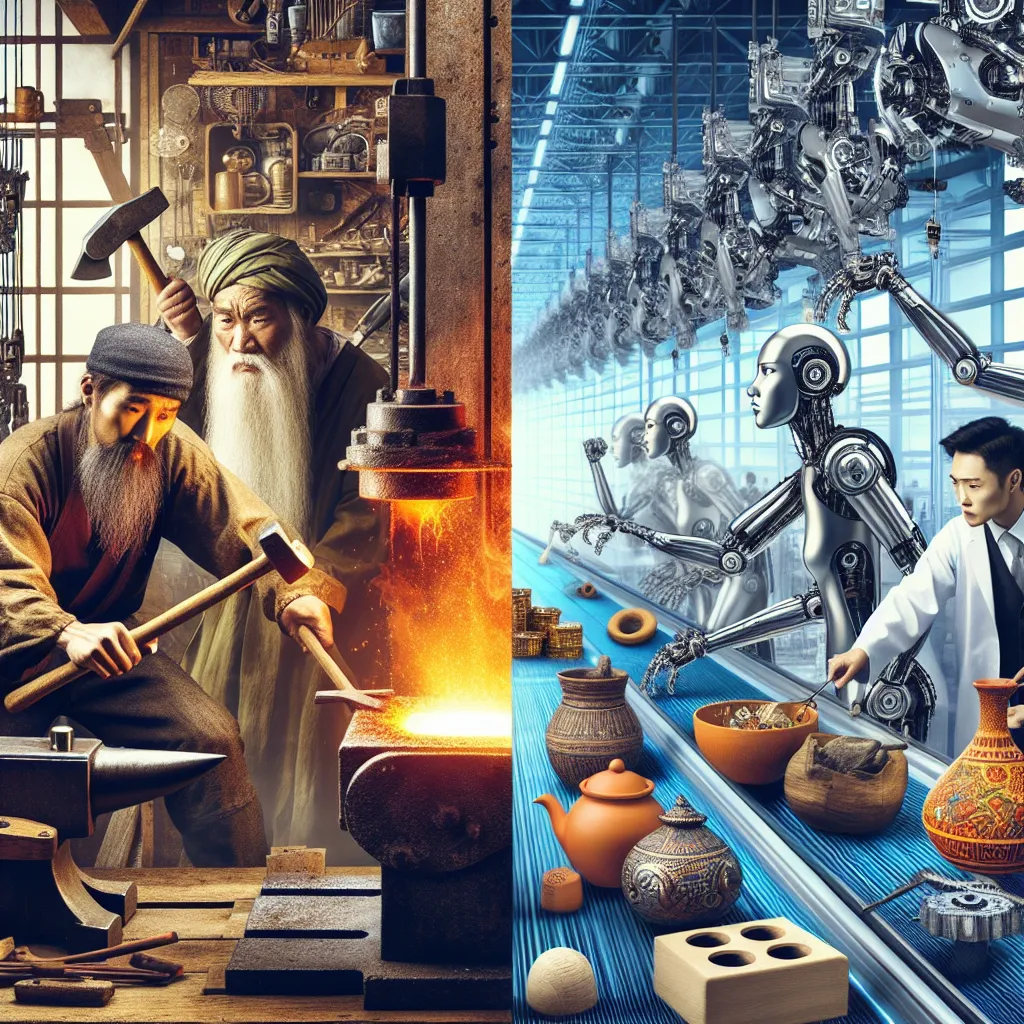The topic of technology’s influence on traditional industries is a recurring theme in IELTS Writing Task 2. Based on past exam trends and the increasing relevance of this subject in our rapidly evolving world, it’s highly likely to appear in future tests. Let’s explore a sample question and provide model essays to help you prepare effectively for this topic.
 Technology disrupting traditional industries
Technology disrupting traditional industries
Analyzing the Question
Let’s examine a typical IELTS Writing Task 2 question on this topic:
Technology is transforming many traditional industries. Some people believe this is beneficial for society, while others argue it causes more problems than it solves. Discuss both views and give your own opinion.
This question requires you to:
- Discuss the positive impacts of technology on traditional industries
- Explore the potential drawbacks or challenges
- Provide your personal perspective on the issue
It’s crucial to address all parts of the question to achieve a high band score.
Model Essay for Band 8-9
Here’s a sample essay that would likely score in the Band 8-9 range:
Technology’s impact on traditional industries is a double-edged sword, bringing both advantages and challenges to society. While some argue that this technological transformation is predominantly beneficial, others contend that it creates more problems than it resolves. In my opinion, the benefits of technological advancements in traditional sectors outweigh the drawbacks, although careful management of this transition is essential.
Proponents of technological integration in traditional industries highlight several benefits. Firstly, automation and digital tools significantly enhance productivity and efficiency, allowing businesses to produce more goods or deliver services faster and at a lower cost. For instance, in agriculture, precision farming techniques using GPS and drones have revolutionized crop management, leading to higher yields and reduced resource wastage. Secondly, technology often improves product quality and consistency, as machines can perform tasks with a level of precision that humans may struggle to match consistently. This is particularly evident in manufacturing, where robotic assembly lines produce goods with minimal defects.
However, critics argue that this technological shift brings substantial challenges. The most pressing concern is job displacement, as automation replaces human workers in many traditional roles. This can lead to unemployment and economic hardship for those who lack the skills to transition to new, tech-oriented positions. Additionally, there are concerns about the loss of traditional skills and craftsmanship, which have cultural and historical significance. For example, the decline of handmade textiles in favor of machine-produced fabrics may result in the loss of traditional weaving techniques passed down through generations.
In my view, while the concerns raised by critics are valid, the overall impact of technology on traditional industries is positive. The key lies in managing the transition effectively. Governments and businesses should invest in retraining programs to help workers adapt to new technologies and find roles in emerging sectors. Furthermore, efforts should be made to preserve traditional skills through educational initiatives and cultural programs, ensuring that technological progress doesn’t come at the cost of cultural heritage.
In conclusion, the transformation of traditional industries through technology is an inevitable and largely beneficial process. While it presents challenges, particularly in terms of employment and preservation of traditional skills, the advantages of increased efficiency, improved product quality, and new economic opportunities are substantial. With proper management and support systems in place, society can harness the benefits of this technological revolution while mitigating its negative impacts.
(Word count: 374)
Model Essay for Band 6-7
Here’s a sample essay that would likely score in the Band 6-7 range:
In recent years, technology has changed many traditional industries. Some people think this is good for society, but others believe it causes more problems. I will discuss both sides and give my opinion.
There are several benefits of technology in traditional industries. First, it makes work faster and easier. For example, in farming, machines can do the work of many people, which saves time and money. Second, technology can make products better. In factories, robots can make things with fewer mistakes than humans. This means customers get better products.
However, there are also problems with this change. The biggest issue is that many people lose their jobs when machines replace them. This can cause unemployment and make life difficult for workers. Another problem is that we might lose important traditional skills. For instance, if all clothes are made by machines, we might forget how to make them by hand.
In my opinion, technology in traditional industries is mostly good, but we need to be careful. Governments should help workers learn new skills so they can find different jobs. We should also try to keep traditional skills alive by teaching them to young people.
To conclude, I believe that technology changing traditional industries has more benefits than problems. It makes work easier and products better. However, we must help workers who lose their jobs and protect important traditional skills.
(Word count: 218)
Key Points to Remember When Writing
-
Essay Structure: Both essays follow a clear structure with an introduction, body paragraphs discussing both viewpoints, and a conclusion. The Band 8-9 essay has more developed ideas and smoother transitions between paragraphs.
-
Vocabulary: The Band 8-9 essay uses more sophisticated vocabulary and phrases like “double-edged sword,” “precision farming techniques,” and “cultural heritage.” The Band 6-7 essay uses simpler language but still conveys the main ideas effectively.
-
Grammar: The higher band essay demonstrates a greater range of complex structures, such as “While some argue that…, others contend that…” The Band 6-7 essay uses simpler sentence structures but still maintains grammatical accuracy.
-
Task Response: Both essays address all parts of the question, but the Band 8-9 essay provides more detailed examples and a more nuanced opinion.
-
Coherence and Cohesion: The Band 8-9 essay uses more advanced linking words and phrases, creating a smoother flow of ideas. The Band 6-7 essay is also coherent but with simpler transitions.
Vocabulary to Remember
- Transformation (noun) /ˌtræns.fəˈmeɪ.ʃən/ – a complete change in the appearance or character of something
- Integration (noun) /ˌɪn.tɪˈɡreɪ.ʃən/ – the process of combining two or more things into one
- Automation (noun) /ˌɔː.təˈmeɪ.ʃən/ – the use of machines and computers to do work that was previously done by people
- Displacement (noun) /dɪˈspleɪs.mənt/ – the act of moving someone or something from their usual place
- Craftsmanship (noun) /ˈkrɑːfts.mən.ʃɪp/ – the skill with which something was made or done
- Productivity (noun) /ˌprɒd.ʌkˈtɪv.ə.ti/ – the rate at which goods are produced or work is completed
- Precision (noun) /prɪˈsɪʒ.ən/ – the quality of being exact and accurate
- Transition (noun) /trænˈzɪʃ.ən/ – the process of changing from one state or condition to another
Conclusion
The influence of technology on traditional industries is a complex and evolving topic that’s likely to remain relevant in IELTS Writing Task 2. To prepare effectively, practice writing essays on related themes such as:
- The impact of artificial intelligence on traditional job markets
- Balancing technological progress with cultural preservation in traditional crafts
- The role of government in managing technological transitions in industries
Remember to structure your essays clearly, use a range of vocabulary and grammatical structures, and provide specific examples to support your arguments. Feel free to practice by writing your own essay on this topic and sharing it in the comments section below. This active practice is an excellent way to improve your writing skills and prepare for the IELTS exam.


